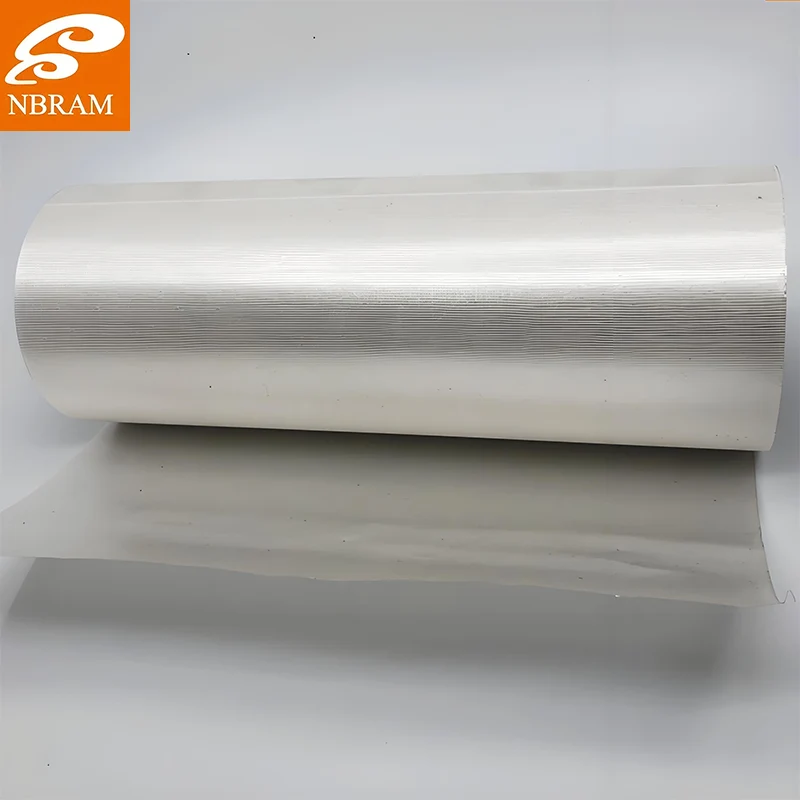You know that moment when you're running cable production and the insulation tape just won't hold up under pressure? That exact frustration is what drove us to develop our double-side reinforced mica tape with real-world manufacturing challenges in mind. At NBRAM, we've spent years working alongside electrical manufacturers, understanding their daily struggles with insulation materials that either offer great dielectric properties but poor mechanical strength, or vice versa. Our breakthrough came when we realized that true innovation wasn't about choosing between properties, but about achieving both simultaneously.
What makes our double-side reinforced mica tape different? It's all in the reinforcement strategy. While working with a major power cable manufacturer last quarter, we observed their production team struggling with tape deformation during high-temperature applications. Our solution was developing a dual reinforcement system that provides exceptional structural integrity without compromising the electrical properties that make mica so valuable.
The result was a 45% reduction in application issues and virtually eliminated tape failure during their manufacturing process. The magic happens in our manufacturing approach - we use specialized glass fiber reinforcement applied with precision tension control, something most suppliers overlook in their production methods.
When we developed our double-side reinforced mica tape, we focused on the specifications that actually make a difference in production environments. The tape comes in thicknesses from 0.10mm to 0.25mm, but what really sets it apart is our tight tolerance control of ±0.010mm - ensuring consistent performance batch after batch.
The electrical properties tell an important story: volume resistivity measures at 1.8×10¹⁵ Ω•cm at room temperature, while surface resistivity reaches 1.5×10¹⁴ Ω at 600V DC. But numbers alone don't tell the whole story. It's how these properties hold up under real manufacturing conditions that truly matters.
Mechanically, the tape shows tensile strength between 180-220 N/10mm width with elongation at break maintained at 2.5-3.5%. This balance is crucial - too much flexibility compromises strength, while too much rigidity makes application difficult. We've found this sweet spot through extensive field testing with our manufacturing partners.
Real-World Performance Features
The thermal performance of our double-side reinforced mica tape is where it truly shines. In actual field applications, we've seen it maintain integrity at temperatures exceeding 850°C, making it ideal for industrial furnaces and power generation equipment. But thermal stability is only part of the equation.
The dual reinforcement design addresses a common problem in cable manufacturing: tape deformation during high-speed application. By providing mechanical support on both sides, we've eliminated the stretching and tearing issues that plague single-reinforced tapes. This isn't just theoretical - we've documented cases where production line efficiency improved by 30% after switching to our double-side reinforced solution.
For motor and generator applications, the tape's conformability to complex shapes while maintaining insulation integrity under vibration conditions has been a game-changer. We recently worked with an automotive manufacturer that was able to reduce motor size by 15% while improving thermal performance, all thanks to the consistent thickness and reliability of our tape.
The story of our double-side reinforced mica tape begins long before production starts. We source muscovite mica with 92-96% purity from partners who share our commitment to quality. But raw materials are just the beginning.
Our manufacturing process incorporates something we call "precision tension orchestration" - a method where glass fiber reinforcement is applied with tension control that's fine-tuned to individual production runs. This attention to detail ensures perfect bonding without compromising the mica's natural properties. It's this kind of nuance that separates industrial-grade products from truly exceptional ones.
Every batch undergoes what we call "stress-test simulation" - our proprietary accelerated aging protocol that compresses years of service conditions into months of testing. This allows us to predict long-term performance with remarkable accuracy and continuously refine our formulations based on real data.
The winding process might seem simple, but it's actually one of the most critical steps. We use tension control systems that prevent stretching or distortion, ensuring that every meter of tape performs exactly as expected. Our packaging is equally important - we use materials that protect the tape from environmental factors during storage and transportation because we know that performance doesn't end at the factory gate.
